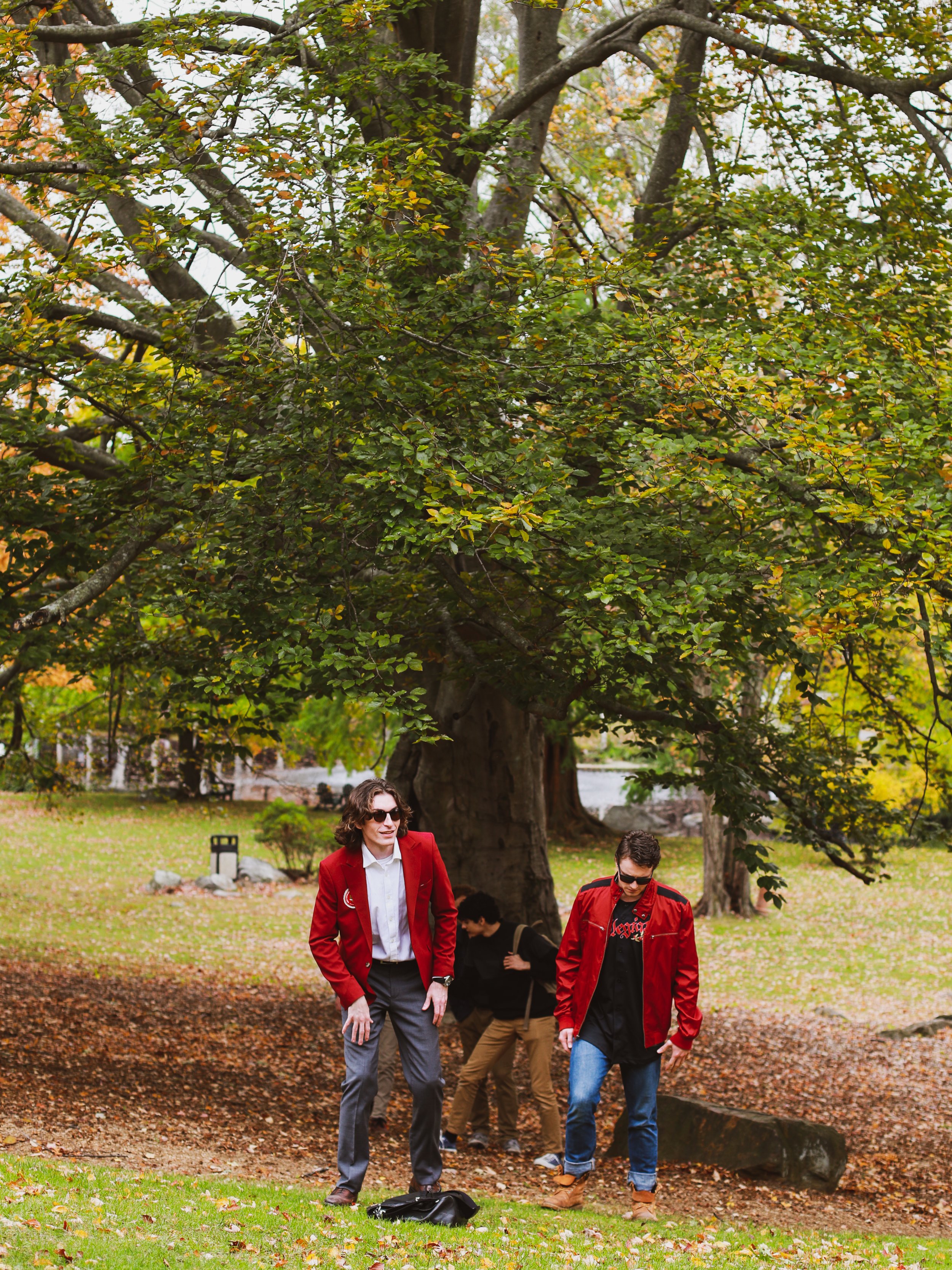
THE NEW ENGLAND SCHOOL OF HIGHER LEARNER -
THE NEW ENGLAND SCHOOL OF HIGHER LEARNER -

The story
is set in an affluent, New England preparatory high school. The fictitious New England Collegiate School of Higher Learning (NECSOHL) contains the classic northeastern characteristics, from wealthy families to rigorous academics. However, where NECSOHL breaks the stereotype is with its division of power. The students run the school; they organize functions, they mentor one another, and they discipline one another. The faculty are only focused on teaching and grading.
What starts as a simple idea to make some money and gain popularity quickly spirals into a school-wide corruption of students. As our protagonists stumble through changing power dynamics and sudden wealth, it does not take long for their naivety to be put on full display.
The mob, named after and operated by The Executive Branch, NECSOHL’s student council, is constantly evading the investigation of The Honor Council, a disciplinary group of students dedicated to academic integrity. Simultaneously, The Executive Branch is trying to overtake The Trust Funders, NECSOHL’s wealthiest students, at the top of the social ladder. It is an unwavering struggle for authority. How can the Executive Branch keep unruly teenagers under control? Will the Honor Council catch on? Or worse, expel those involved? Most importantly, can the Executive Branch, a tiny group of insecure high schoolers, stay united under pressure?

This story is fundamentally my experience as a student of a small, private high school in western Connecticut. While it is not completely autobiographical, it represents how I saw the world when I was coming of age. I felt overpowering pressure to be the most well-rounded person in any room so I could walk into any college I wanted. If I got even a C, I felt like I had gone bankrupt. The slightest social dilemma felt like a diplomatic nightmare. It wasn’t enough to be student council president; you had to be the mayor of the city.
It didn’t help that I felt extremely out of place. My father owns a plumbing company and his only other employee is his secretary, my mother. I was between two worlds: surrounded by the white-collar wealth of my classmates during the day, just to get blue-collar lessons from The School of Hard Knocks at night. I was not sure which world was actually mine.
On top of that, I had spent my childhood hearing about all the crazy stunts my old man pulled in high school. Since he would often recount the late-night drag races with his buddies or their ploys to cut class in the most ridiculous ways possible, I felt like I had a legacy to uphold. I couldn’t just do well academically - I also had to be the “bad boy” cutting against the grain.
In reality, I only had to get good grades. That was it.
Director’s Statement
I didn’t have to worry about affording my dress code attire. I didn’t have to worry about being popular; my entire high school only had 198 kids. When I did pull stupid stunts, I got away with seriously everything. I never had to worry about facing real world repercussions - I never even got detention. Yet, I was still concerned that I would be a failure if I did not overcome the same immense social and academic pressure that so many high school and college students feel today. It was not hard to imagine a world where immature kids with no moral compasses lose themselves in the pursuit of their image.
I wrote this film as an attempt to reconcile with both my privileged upbringing and the state of the modern educational experience. Private education in New England is historically comprised of predominantly white, affluent families, so it was essential to accurately capture the treatment of those from all racial and socioeconomic backgrounds. It was also vital to comment on hetero-normative behavior - that is, the vicious (and often violent) nature of teenage boys. Though the script contains snappy dialogue and playful moments, this is not a high school comedy. It’s a blunt analyzation of the four most formative years of my adolescence.












































